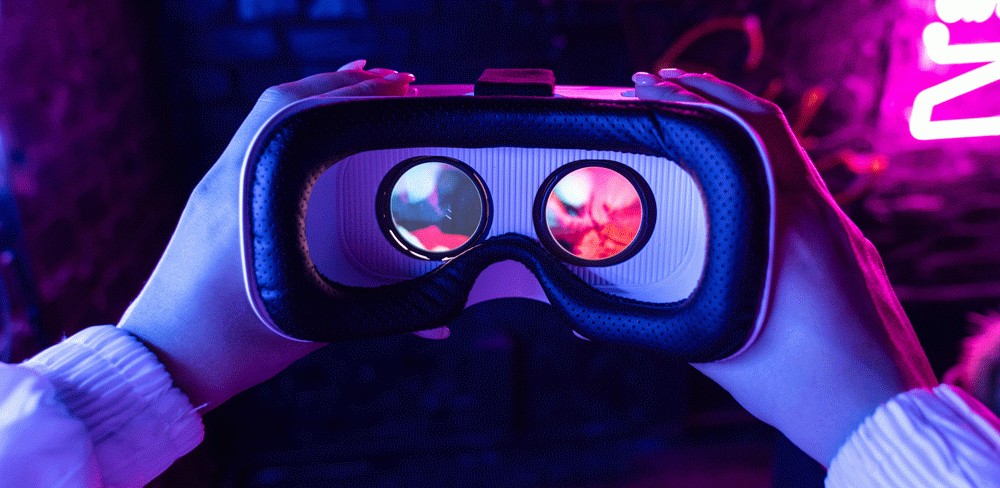Virtual reality may be thought of as an immersive way to play your favourite games, but it also has an increasingly important role in providing support for patients and staff.
Virtual reality, or VR, has increasingly become a part of people’s lives in the last decade. While it was first created in the late sixties, it was not until 2014 that huge tech companies invested in the idea.
Samsung announced the Samsung Gear VR, a headset that uses a Samsung Galaxy smartphone as a viewer. As well as this, Sony announced that they were working on a VR headset for the PlayStation 4 (PS4).
By 2017, many companies were developing their own VR headsets, including HTC, Google, Amazon, and Microsoft.
More recently, the Apple Vision Pro brought VR into our private and public spaces even more. Users can watch videos, make calls, and play games on multiple windows at once (for the hefty price of up to £4,000).
VR was first used for training back when it was created for military trials, and has been utilised in other sectors like healthcare since the eighties for medical trials.
But how can we continue to use these innovative technologies for healthcare? There are various ways that VR is already being utilised as a tool to improve patient care, recruitment and training.
VR as a distraction
One way VR can help to enhance the healthcare sphere is to support patients throughout their treatment.
At Medway Maritime Hospital, the tech is helping to keep patients calm and alleviate their pain while they have image-guided procedures carried out under local anaesthetic.
It is believed to be the only NHS hospital in the country to offer therapeutic VR to patients undergoing Interventional Radiology (IR) procedures such as angioplasty, stent changes and inserting feeding tubes.
Andrea Hattabi, senior sister for interventional radiology at the hospital, said: “Every IR procedure is carried out under local anaesthetic, meaning the patient is awake. Using the headset helps block pain receptors and helps them to take their mind off of what is happening.
You can see that it works because the machines show their vital signs stabilise during the procedure while wearing the headset.”
She added: “We’re already talking to other teams across the hospital who are interested in using TVR in their service, so the hope for the future is to be able to offer TVR in other areas so even more patients, including children, can benefit.”
At the Christie NHS Foundation Trust, a specialist cancer centre in Manchester, VR is used as a distraction therapy for children and young people having radiotherapy.
The headset is specially designed for children aged between seven and 16 years-old.
The team use the headset with patients when they’re having clinical procedures including cannulation, injections, blood tests and dressing changes, as well as with those having radiotherapy or proton beam therapy treatment for cancers other than brain tumours (as these patients have to wear a mask over their faces).
Patients can choose what scenarios the VR will show, with choices such as a theme of ‘Under the Sea.’
VR as a type of therapy
This leads us to another way VR can help patients. In the mental health sector on the NHS, the technology can be used to allow patients to overcome extreme fears in a safe environment.
One example of this comes from the VR company gameChange.
They provide psychological therapy for people with psychosis, aiming to reduce anxiety around daily activities.
For people living with psychosis, everyday tasks – such as getting on a bus, going shopping, speaking to other people – can be a challenge.
At Greater Manchester Mental Health NHS Foundation Trust, gameChange was piloted and received positive feedback from patients and staff.
The VR therapy programme allows a person to practise, at their own pace, being in virtual simulations of everyday situations. The therapy is provided in around six 30-minute sessions.
Agoraphobia, a type of anxiety disorder where someone is afraid to leave environments they know, is often untreated or undertreated in adults who present with a range of mental health conditions.
The VR therapy uses cognitive behavioural therapy (CBT) techniques supported by mental health professionals, requiring less time for delivery and easier access to treatment for patients.
VR as training
Virtual reality tech is not only useful for patients in healthcare, but also for providing training to NHS staff.
The South Western Ambulance Service NHS Foundation Trust is using it to provide its incident commanders with an immersive training experience to test their knowledge, skills and decision making in a realistic environment.
It is especially useful for incidents such as multi-vehicle road traffic collisions, flooding and terrorist attacks.
During the training, virtual reality headsets are worn giving a three-dimensional moving image with realistic sound effects and voice injects, which replicates a live incident.
Although this is the first ambulance trust to provide this kind of VR training, this could be the start of more NHS organisations using the technology to support their staff.





